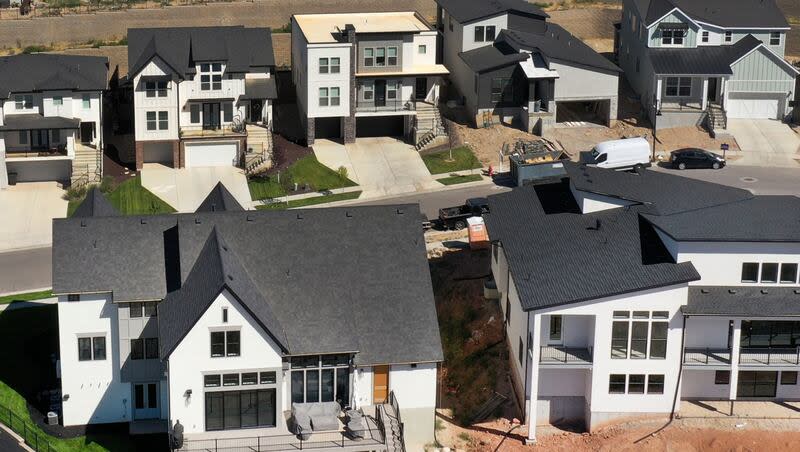The fading American dream? Utah study delves into the realities of homeownership

- Oops!Something went wrong.Please try again later.
A LendingTree survey found that 94% of Americans view owning property as part of the American dream, while 51% of renters surveyed fear they will never be able to afford their own home.
The Utah Foundation recently released a new report on the state of the housing market regarding prospective buyers and found that the fear of never owning property is not necessarily irrational, specifically in Utah.
“The ongoing lack of home affordability in Utah has likely both delayed household formation for many of the millennials and first-time homebuyers, possibly expanding a rental culture that could be detrimental to the educational outcomes — and future home prospects — for their children,” John Salevurakis, the research analyst and author on the report, said.
The housing market in Utah
According to Zillow, the average cost of a home in Utah increased by .3% last year to $501,653.
“Between 2012 and 2022, the value of a median-priced home in the U.S. increased by $190,000, or a gain of $19,000 per year on average,” the Utah Foundation report said. “This increase is even more pronounced in Utah, where the median home price nearly doubled between 2017 and 2022.”
The number of households in the U.S. between 2010 and 2020 grew by only 10.1 million, or a 9% increase, marking the smallest growth in any decade since 1950, per the report. Household growth contributes to the rising costs of housing, which could postpone the creation of new households.
At the Utah Economic Outlook and Public Policy Summit in January, Utah Gov. Spencer Cox proposed building 35,000 starter homes in the next five years to curb the present housing affordability crisis.
“The American dream is dead if you cannot own a home,” Cox said. “I believe that home ownership is central to everything that makes us prosperous, keeps us rooted, helps with our economy, helps with our culture, helps with our neighborhoods, everything that we value.”
Income and education in the housing market
The Utah Foundation found a direct correlation between education and income levels and that both improved in children raised in owned homes versus rented ones.
“Adolescents from low-income, home-owned households are 13 percentage points more likely to graduate high school than their counterparts from low-income, rental households,” the report said. “During the 2000s, every $10,000 increase in family housing wealth increased the likelihood of a child attending college by 0.7% on average. The impact was more substantial when considering only lower-income households, which experienced a 5.7% increase in the likelihood of a child’s college enrollment for every additional $10,000 in housing wealth.”
The problem with this correlation between wealth and education regarding housing prices is that wages have not been able to keep up with rising housing costs. A Zillow report said that to afford mortgage payments comfortably, you would need an annual income of more than $105,000.
In 2020, a household with an annual income of $59,000 could afford the monthly mortgage payments for an average U.S. home without exceeding 30% of its income, assuming a down payment of 10%. “That was below the U.S. median income of about $66,000, meaning more than half of American households had the financial means to afford homeownership,” per Zillow.
The Utah Foundation report cautioned that although research shows a correlation between homeownership and better educational achievements, it does not assert that owning a home directly leads to enhanced educational outcomes.

